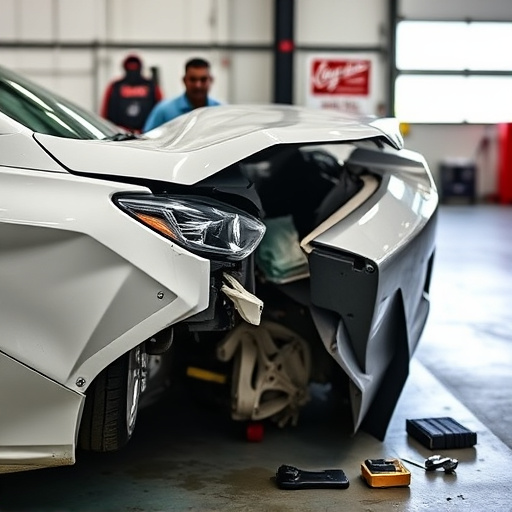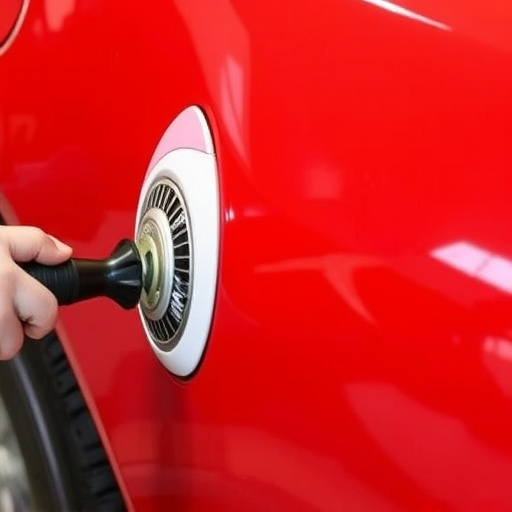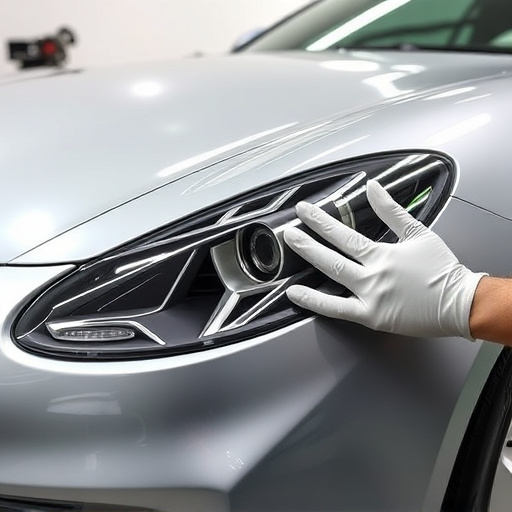The Mercedes air suspension system, a complex network of air springs, valves, sensors, and actuators, requires regular maintenance and expert repair to mitigate age-related, environmental, or driving habit-induced issues. Prompt repair by specialized mechanics ensures superior handling, improved safety, and preserves vehicle value, including paint and auto body. Diagnosing problems using pressure and height readouts helps identify leaks, damage to valves or struts, and potential bumper or body painting repairs. Comprehensive inspection, leak sealing, and replacement of damaged parts are crucial for accurate Mercedes air suspension repair.
Mercedes air suspension systems offer a smooth, customizable ride, but issues can arise. This guide delves into diagnosing and repairing your Mercedes’ air suspension using pressure and height readouts. Understanding how these components work is crucial for identifying problems, whether it’s a leaky valve or a faulty sensor. We’ll walk you through a step-by-step process to ensure your vehicle returns to its optimal riding height and comfort level, focusing on effective Mercedes air suspension repair techniques.
- Understanding Mercedes Air Suspension System
- Diagnosing Issues Using Pressure and Height Readouts
- Step-by-Step Guide to Repairing Your Mercedes Air Suspension
Understanding Mercedes Air Suspension System

The Mercedes air suspension system is a sophisticated piece of engineering that enhances both ride comfort and vehicle handling. This innovative technology uses compressed air to elevate and lower the car’s wheels, allowing for smoother transitions over uneven terrain. The system comprises several components working in harmony: air springs, control valves, sensors, and actuators. Each part plays a crucial role in ensuring optimal performance and a comfortable ride. When it comes to Mercedes air suspension repair, understanding these intricate relationships is key.
Regular maintenance is vital to keep this complex system functioning at its best. Over time, factors like age, environmental conditions, and driving habits can impact the air springs and sensors, leading to issues such as uneven tire wear, loss of ride height, or a bumpy ride. That’s where specialized mechanics come in, equipped with tools to diagnose problems through pressure and height readouts. By addressing these concerns promptly, owners can enjoy the benefits of superior handling, improved safety, and the preservation of their vehicle’s overall value—including its pristine car paint repair and impeccable auto body repair. Even tire services play a role in maintaining air suspension efficiency.
Diagnosing Issues Using Pressure and Height Readouts

Diagnosing issues with a Mercedes air suspension using pressure and height readouts is a precise method that allows skilled technicians to pinpoint problems quickly. By monitoring the pressure in each air spring, it’s possible to detect leaks or damage that could be affecting the vehicle’s ride height. A drop in pressure might indicate a breach in the air chamber, while inconsistent height readings across different wheels can signal faulty control valves or damaged struts.
These readouts provide valuable data that helps differentiate between various issues within the suspension system. For instance, a sudden and significant drop in pressure could point to an obvious and immediate problem, warranting urgent attention from a qualified vehicle body shop. In contrast, more subtle changes might suggest long-term wear and tear on components, requiring expert analysis and eventual replacement during auto bodywork and auto painting services.
Step-by-Step Guide to Repairing Your Mercedes Air Suspension

Repairing your Mercedes air suspension is a process that requires precision and knowledge. Here’s a step-by-step guide to help you get started:
1. Identify the Problem: Begin by monitoring pressure and height readouts. Use specialized tools to check for any leaks or significant changes in pressure, which could indicate damage to valves, pipes, or bags. Also, observe if the vehicle’s ride height differs from its original setting, suggesting a potential issue with air springs or control modules.
2. Inspect the System: Locate and inspect each component thoroughly. Look for signs of wear, corrosion, or damage, focusing on the air springs, struts, valves, and lines. Check for any visible dents or deformities in the suspension parts, similar to how you’d assess a car dent repair. Pay close attention to the condition of the seals, as they play a crucial role in maintaining pressure.
3. Diagnose and Repair: If leaks are found, replace the damaged valves, pipes, or bags. Ensure proper sealing for all connections. For issues with air springs or control modules, consult a professional mechanic who can diagnose and repair or replace these components accurately. Remember, accurate diagnosis is key to effective Mercedes air suspension repair, preventing future problems that might require bumper repair or even auto body painting.
In conclusion, diagnosing and repairing a Mercedes air suspension system is a process that requires precision and understanding of its unique mechanics. By utilizing pressure and height readouts, you can effectively identify issues and make informed repairs. With the right tools and this guided approach, you’ll be well-equipped to handle common problems, ensuring your Mercedes maintains its smooth ride and superior handling for years to come. Remember, proper maintenance and timely repairs are key to preserving the integrity of your vehicle’s air suspension system.














